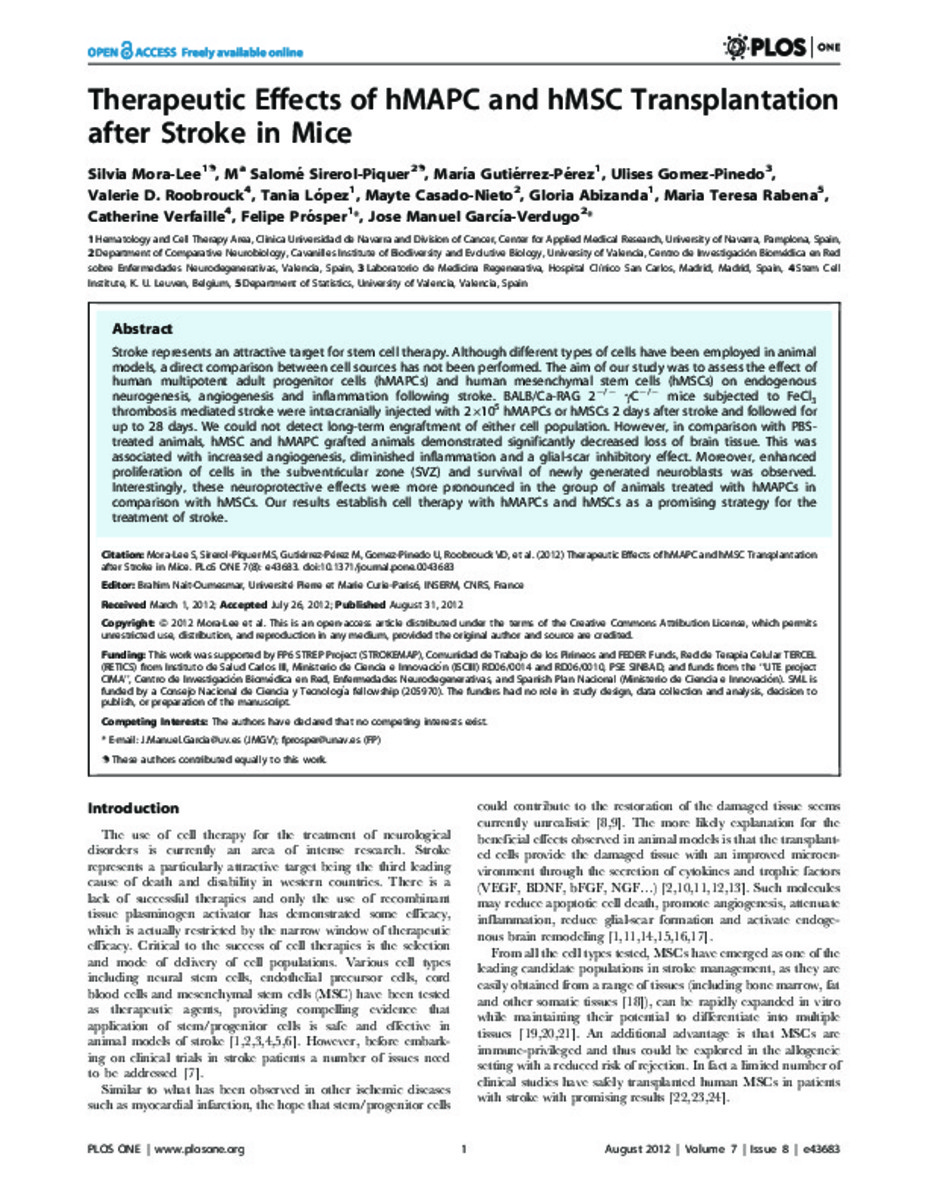Therapeutic effects of hMAPC and hMSC transplantation after stroke in mice
Palabras clave :
hMAPC and hMSC
Transplantation
Therapeutic effects
Fecha de publicación :
2012
Editorial :
Public Library of Science
Cita:
Mora-Lee S, Sirerol-Piquer MS, Gutiérrez-Pérez M, Gomez-Pinedo U, Roobrouck VD, López T et al. Therapeutic effects of hMAPC and hMSC transplantation after stroke in mice.PLoS One. 2012;7(8):e43683.
Aparece en las colecciones:
Estadísticas e impacto
0 citas en

0 citas en

Los ítems de Dadun están protegidos por copyright, con todos los derechos reservados, a menos que se indique lo contrario.







